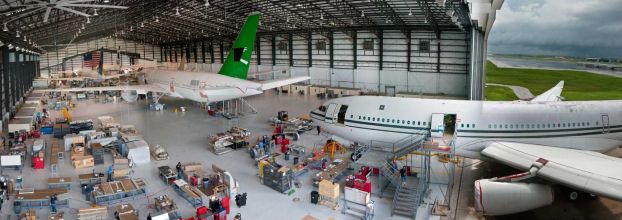- Home
- View Our Industrial Lines of Products
- Cooling
- Industrial Building Air Circulators HVLS Fans
Industrial Building Air Circulators HVLS Fans
We have the Knowledge and Experience Needed to Assist in Choosing the right product for these types of Applications.
Experience and knowledge is the key to be able to provide this service. We sold our first Radiant gas Heaters in 1955 and our first HVLS fan in 2000. We enjoyed 7 Years as Territorial Representative for Macro Air as it was built up.
We suggest calling for the Best price, help and up to date information.
Direct Drive HVLS Fans:
-
Pros:
- Efficiency: Direct drive motors directly connect the fan blades to the motor, eliminating energy loss associated with gears.
- Quiet Operation: The absence of gears results in significantly quieter operation compared to gear-driven fans.
- Reduced Maintenance: Fewer moving parts mean less maintenance and fewer potential points of failure.
- Longer Lifespan: The simplified design contributes to a longer lifespan and reduced need for repairs.
- Potential for Energy Savings: Lower energy consumption can lead to significant cost savings over time.
- Efficiency: Direct drive motors directly connect the fan blades to the motor, eliminating energy loss associated with gears.
-
Cons:
- Higher Initial Cost: Direct-drive motors can sometimes be more expensive upfront.
- Electronics Sensitivity: The electronics in direct-drive systems can be more sensitive to harsh environments.
- Potentially Higher Motor Cost: Motors in direct drive systems may contain rare earth magnets, which can increase cost.
- Higher Initial Cost: Direct-drive motors can sometimes be more expensive upfront.
Gear-Driven HVLS Fans:
-
Pros:
- Durability: Gear-driven fans can be very robust and durable, particularly in harsh conditions.
- Lower Initial Cost: Gear-driven fans may have a lower initial purchase price.
- Durability: Gear-driven fans can be very robust and durable, particularly in harsh conditions.
-
Cons:
- Lower Efficiency: The gear system can cause energy loss, reducing overall efficiency.
- More Noise: The gear system introduces more noise during operation.
- Higher Maintenance: More moving parts mean more potential for maintenance and repairs.
- Potential for Downtime: More components mean a higher chance of breakdown and downtime.
- Lower Efficiency: The gear system can cause energy loss, reducing overall efficiency.

 Loading... Please wait...
Loading... Please wait...
